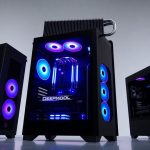Samsung raises DRAM and NAND memory prices by up to 30%

The landscape of memory pricing is shifting dramatically, affecting everything from smartphones to high-performance computing devices. As technology continues to advance, the demand for faster and more reliable memory solutions has surged. One of the leading players in the industry, Samsung Electronics, has recently announced significant price increases for its memory products, which could reshape the market dynamics for consumers and manufacturers alike.
This trend comes at a time when the global tech industry is grappling with supply chain constraints and soaring demand driven by emerging technologies such as artificial intelligence (AI). As we delve deeper into the implications of these price hikes, it becomes clear that understanding the types of memory involved and their applications is crucial for anyone interested in technology and its future.
- Samsung Electronics will raise prices between 5% and 30% depending on the type of memory (NAND & DRAM)
- Why are memory prices increasing instead of decreasing this year?
- Understanding DRAM and its significance in modern devices
- What influences the cost of NAND Flash memory?
- The role of artificial intelligence in shaping memory demand
- Future outlook for memory prices and technology trends
Samsung Electronics will raise prices between 5% and 30% depending on the type of memory (NAND & DRAM)
Samsung's price increases vary significantly based on memory type. The most notable hike is expected for DRAM memory, which is critical for RAM modules. Prices for DRAM will see an increase between 15% and 30%, particularly affecting LPDDR4X, LPDDR5, and LPDDR5X memory types. These memory types are commonly found in:
- Smartphones
- Tablets
- Portable gaming consoles
- Laptop computers
- Mini-PCs
In addition to DRAM, the price of NAND Flash memory, which is used in SSDs and mobile devices, will rise between 5% and 10%. These increases are a direct result of a persistent memory shortage, which is expected to last until the end of 2026. The implications of these trends suggest that other major players in the memory industry, such as SK Hynix and Micron, might follow suit with similar price adjustments.
Why are memory prices increasing instead of decreasing this year?
Traditionally, memory prices tend to decrease as the year winds down, influenced by seasonal demand fluctuations. However, this year paints a different picture. The surge in demand for high-density, high-speed memory solutions, primarily driven by the rise of AI, has prompted companies to adjust their production strategies accordingly. This shift includes a focus on:
- High Bandwidth Memory (HBM) for AI applications
- Reducing production of older memory types like DDR4 and LPDDR4X
- Enhancing the manufacturing of more profitable memory types
By prioritizing these newer technologies, manufacturers are creating a tight supply of older memory types, which in turn drives up their prices. For instance, SanDisk announced a 10% price increase on NAND Flash memory for consumer products as of September 5, further illustrating this trend. The ongoing demand for AI and data center solutions continues to strain supply, exacerbating the situation.
Understanding DRAM and its significance in modern devices
DRAM, or Dynamic Random Access Memory, is a type of volatile memory that is essential for the operation of various electronic devices. Unlike non-volatile memory, DRAM requires constant power to maintain the stored information. Its significance lies in:
- Speed: DRAM offers fast access times, which is crucial for performance-intensive applications.
- Capacity: It provides the necessary memory capacity for multitasking in modern computing environments.
- Cost-effectiveness: Compared to other memory types, DRAM is relatively affordable for manufacturers.
As devices become more sophisticated, the demand for DRAM continues to grow, particularly in sectors like gaming and AI, where performance is paramount.
What influences the cost of NAND Flash memory?
NAND Flash memory is used widely in storage solutions such as SSDs and USB drives. Its price is influenced by several factors:
- Manufacturing Costs: Production difficulties can lead to increased costs.
- Market Demand: A surge in demand from sectors like mobile computing and consumer electronics can push prices higher.
- Technological Advances: Innovations in memory technology can create shifts in pricing dynamics.
The rising cost of NAND Flash memory reflects not only supply chain challenges but also the technology's critical role in supporting modern applications and user needs.
The role of artificial intelligence in shaping memory demand
AI is one of the primary drivers behind the increased demand for both DRAM and NAND Flash memory. As AI technologies proliferate, they require memory solutions that can handle vast amounts of data quickly and efficiently. The growing adoption of AI in various fields has led to:
- A greater need for high-performance computing resources.
- Increased investment in data centers, which rely heavily on advanced memory solutions.
- Development of applications that require real-time processing and fast data retrieval.
As a result, the integration of AI into business operations and consumer products is creating a ripple effect, significantly impacting memory pricing and availability.
For a deeper understanding of the advancements in memory technology, you might find this video insightful:
Future outlook for memory prices and technology trends
As we look ahead, the landscape of memory pricing is likely to remain volatile due to ongoing supply chain issues and the relentless demand for advanced memory solutions. Analysts predict that:
- Price increases may persist as manufacturers struggle to meet demand.
- Investment in new manufacturing technologies will be critical to alleviating shortages.
- Consumer electronics prices may rise as manufacturers pass on increased costs.
In summary, understanding the intricacies of memory technology and its market dynamics is essential for consumers, manufacturers, and investors alike. As technology continues to advance, staying informed will be key to navigating the changing landscape.




Leave a Reply